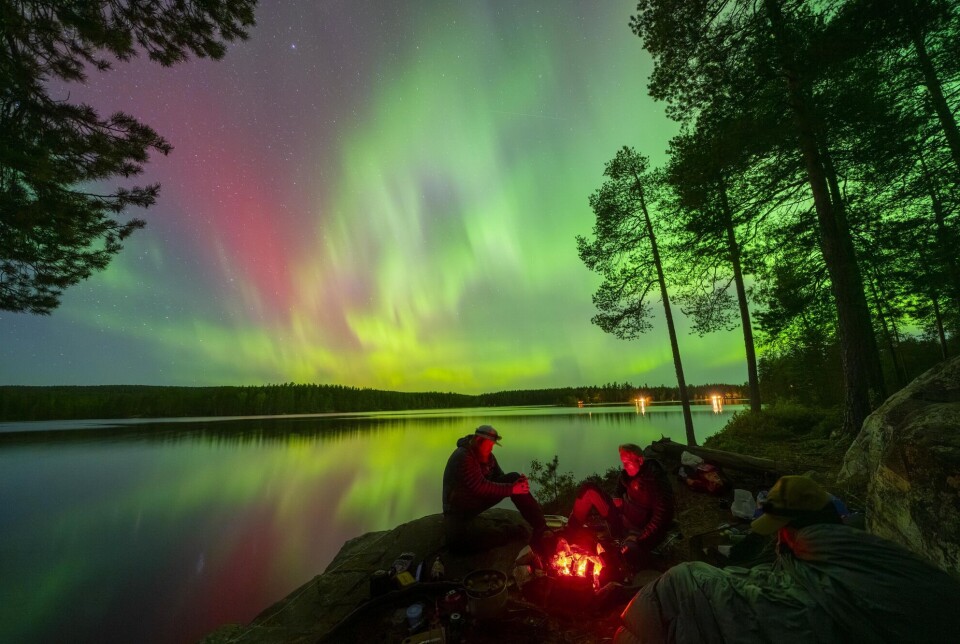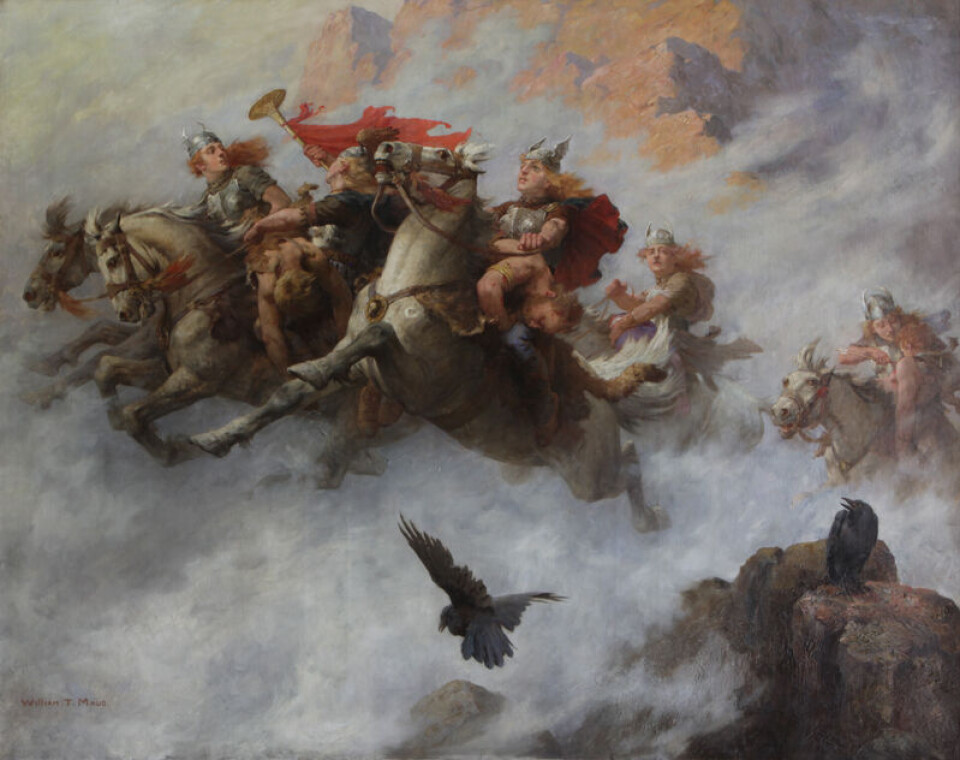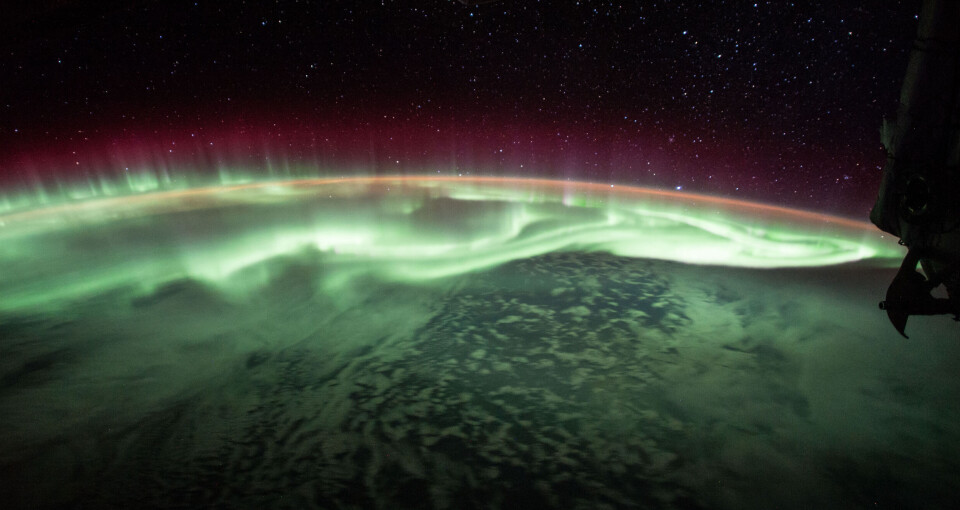
What people used to believe about the northern lights
In the past, people believed they had to protect their heads and hair when the northern lights appeared. A dancing maiden or an angry god could cut it off.
30,000 years ago, the northern lights illuminated the skies over France. The sight made such an impact on our early ancestors that they painted it on the walls of their caves.
3,000 years ago, someone in China wrote about what they saw in the sky. On strips of bamboo, they described a fierce, five-coloured light in the north.
We have no way of knowing what early humans or the ancient Chinese believed about what they saw.
However, we do know what the prophet Ezekiel believed he saw. Around 2,600 years ago, he described blazing fire and radiant light in the sky. Four winged creatures with animal faces emerged. They shone, and fire moved back and forth. It flashed and thundered. A figure appeared on a throne, and Ezekiel heard the voice of God.
Many believe these Bible verses describe the northern lights.
Spirits dance, God watches
Powerful solar storms can make the northern lights visible much farther south than usual, though this happens rarely – perhaps once in a lifetime. A deeply religious person who has never seen anything like it could easily interpret it as a divine revelation.
Others have done so as well.
The Meshkwakihug people in North America believed the northern lights were spirits revealing themselves, according to a book about the northern lights by physicists Asgeir Brekke and Alv Egeland.

The Ottawa people thought their god was setting the sky on fire, and the bright flames were a sign that their god still cared for them.
For others, the northern lights were a symbol of death.
The dead are dancing
A people in Canada believed that their god set the sky ablaze, but it also signified that one of their own would die.
In various cultures around the world, the northern lights have been seen as the souls of the deceased.
A tribe on the northwest coast of the USA believed that warriors who had died in battle resided within the northern lights.
On the west coast of Norway, people thought that elderly, unmarried women went to the northern lights when they died. There, they would dance and wave white mittens.
This belief also existed in Finland and other parts of the Nordic region. Old women or maidens of any age were thought to dance in the sky after their death.
In Scotland, it was supernatural male warriors who danced in the sky, their goal being to flirt with beautiful women.
In many places, the northern lights were considered quite frightening.
Dangerous for children
In Iceland, it was believed that a woman giving birth would not feel pain if the northern lights were present. However, she was warned not to look at the sky, as doing so could cause her child to be born cross-eyed, according to space physicists Arve Aksnes and Kjellmar Oksavik in an article in Naturen.
The Inuits in Alaska would bring their children indoors during the northern lights, fearing that any child left outdoors could lose their head. However, there was a way to ward off danger – if they sang or waved a knife, they could keep the lights at bay.
The Sámi in Finnmark believed that the northern lights could kill their children. An old legend tells of a child mocked the northern lights and was struck down and burned.
In many places, people were warned not to laugh at or mock the northern lights.
In Troms, it was believed that laughing at the lights would cause paralysis. In Østerdalen, people thought the northern lights could cut off their heads with its beams.
A milder version of this belief existed in the Faroe Islands, where children had to wear hats during the northern lights, or else their hair would be singed.
The Valkyries in the light
The Vikings interpreted the northern lights through their mythology. They believed that dead warriors lived in Valhalla but would ride out to signal the onset of war. The northern lights were seen as the glow of the Valkyries’ shields – the ones who decided who would fall in battle.

The term ‘nordlys’ (northern lights) was first used in the Norwegian book Kongespeilet (King’s Mirror) in the 13th century, where an anonymous father offers advice to his son.
When the son asks his father to explain the northern lights, the father hesitates, admitting he doesn’t know enough. But, unlike the common belief of the time that linked the lights to the gods, the father believes it to be a natural phenomenon.
In those days, the northern lights were often viewed as messages from ruling gods and powerful leaders.
Warning or support
The sky glowed in the days before Olav Tryggvason’s battle against Danish, Swedish, and Norwegian enemies in the year 1000. One of his warriors claimed to see two men in the sky placing their hands on the king. Olav fell in the Battle of Svolder, and many believed the northern lights had foretold his fate.
In medieval Europe, the northern lights were interpreted as signs of God’s anger towards humanity. It was a warning of doomsday, signaling plague and death. God was displeased and showed it with a restless, red sky. People reported seeing angels, demons, and celestial warriors.
In England in 1716, the northern lights were seen as a sign of God's fury over the execution of two Scottish rebels, but also as divine support for those who had delivered the verdict.
In 1789, the sky over England and Scotland turned a bright red. Soon after, the French Revolution began. The northern lights were seen as a clear omen.
References:
Aksnes, A. & Oksavik, K. Nordlyset. Den himmelske danserinnen (The northern lights: The heavenly dancer). Naturen, 2021. DOI: 10.18261/issn.1504-3118-2021-02-03-08
Brekke, A. & Egeland, A. Nordlyset. Fra mytologi til romforskning (The northern lights. From mythology to space research), Grøndahl, 1979.
Van der Sluijs, M.A. & Hayakawa, H. A candidate auroral report in the Bamboo Annals, indicating a possible extreme space weather event in the early 10th century BCE. Advances in Space Research, vol. 72, 2023. DOI: 10.1016/j.asr.2022.01.010
Kongespeilet fra 1200-tallet (King’s Mirror from the 13th century). Aschehoug, 1947.
———
Translated by Alette Bjordal Gjellesvik
Read the Norwegian version of this article on forskning.no






































